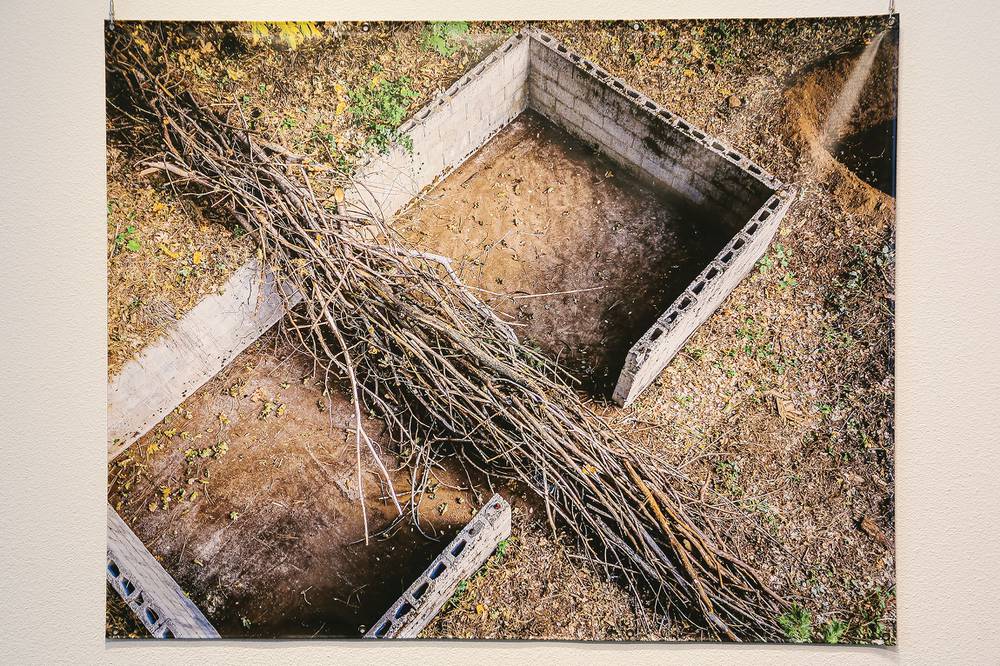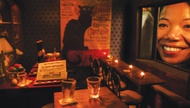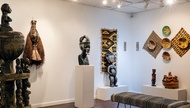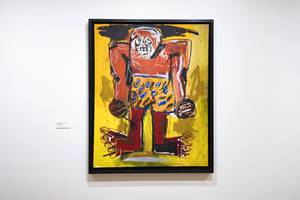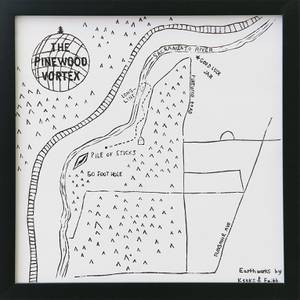Step right up, folks, to see the Pinewood Vortex. OK, well … you can’t actually see this mysterious tourist attraction in person—it’s located on private property along California’s Sacramento River. But you can experience the artifacts of the “50 Foot Hole,” “Pile o’ Sticks” and “The Longest Line in the World” for free at the Windmill Library. And you can purchase souvenirs relating to these odd feats of invention. A corresponding website, PinewoodVortex.com, keeps the story going. It’s all part of a sublime and satirical exhibition of land art by artists Kristin Hough and Faith Sponsler called Pinewood Vortex.
If it feels like you’re missing something in the explanation, that’s somewhat intentional. “We [purposefully] didn’t include a lot of very explanatory stuff so that people could follow a story,” Sponsler says. “We wanted people to connect the dots on their own.”
Viewers wouldn’t be too wrong if they mistook Pinewood Vortex for a historical museum exhibit showing ephemera from a bygone roadside tourist trap. Banners advertising the individual attractions hang alongside large-scale photos of them. Postcards and souvenirs are on display in a glass case. And a mysterious jumble of canvas sits in another display box. Could it be the “line” in question?
When attempting to piece together the story line of (and motivation behind) Pinewood Vortex, it will help to have a little background on the land art or earthworks movement. It emerged in the 1960s with a noble goal: to escape the hyper-commodification of the art world while also reconnecting with nature. The scope is as large as a real-life landscape, and the materials are nothing less than nature itself. For example, artist Robert Smithson famously built a 1,500-foot-long coil out of locally sourced black rocks for “Spiral Jetty” (1970) in Utah’s Great Salt Lake.
But the high-minded movement also suffered from unintended pitfalls. It was exclusionary. Massive monuments require massive budgets, so only the most famous and funded artists could participate. In 1979, light artist James Turrell bought an extinct volcano in northern Arizona for his massive earthwork called “Roden Crater.” How many artists can afford a volcano?
With Pinewood Vortex, Hough and Sponsler set out to challenge the stereotypes. “We want[ed] to widen the scope of who makes and shows land art, because it really is a traditionally male-dominated field,” Sponsler says. “It was really important for us not to go in [to] making the earthworks with a lot of capital. We wanted to just be using our bodies—that was really important.”
Another pitfall of land art: These massive projects can permanently impact the very environment they’re highlighting. For example, artist Michael Heizer cut two 30-by-50-foot trenches into a remote desert mesa near Overton, Nevada, for “Double Negative” (1969). Love it or hate it, the 240,000 tons of sandstone removed for the sculpture won’t ever be returning to their natural form.
Hough and Sponsler took an opposite tack. “It was important to us that it sort of didn’t last forever—that it could go away and not leave a harmful or lasting impression,” Sponsler says. Because it’s long and shallow, their “50 Foot Hole” will fill itself in. The “Pile o’ Sticks” will decompose. And as for “The Longest Line in the World,” Sponsler says, “We had it there for a while, and then we just rolled it up, and we could take it away.”
Pinewood Vortex Through July 6; Monday-Thursday, 10 a.m.-8 p.m.; Friday-Sunday, 10 a.m.-6 p.m.; free. Windmill Library, 7060 W. Windmill Lane, 702-507-6030.
Click HERE to subscribe for free to the Weekly Fix, the digital edition of Las Vegas Weekly! Stay up to date with the latest on Las Vegas concerts, shows, restaurants, bars and more, sent directly to your inbox!
